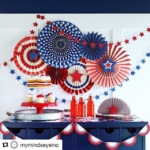Uncategorized
January 14, 2013 •
United in the New Year

As I write this, it’s Cyber Monday, which arrives on the heels of Green Thursday, Black Friday and Small Business Saturday. The final numbers are still out as we go to press, but it looks as though the news will be good on this front. A record 247 million shoppers shopped in virtual and physical stores this past weekend, up 9 percent from 226 million in 2011, according to the National Retail Federation (NRF). Total spending over the four-day weekend reached another record, $59.1 billion, a 13 percent increase from $52.4 billion in 2011, also according to the NRF.
While I’m hoping for the best during the vital 2012 holiday season, by the time you read this it’ll all be over, and will once again be time to roll up your sleeves and get back to work. As you prepare to dazzle customers with new product — it may be a good idea to reexamine what it means to all of us to create and carry product that is made in America. While it is most likely impossible to do this completely — for example, some eco-friendly product benefits those struggling to survive in third world counties — this is beneficial on so many levels. In short, U.S. manufacturing creates jobs, keeps money circulating here, and decreases dependency on other countries.
This welcome sentiment has birthed a slew of resources for both businesses and consumers. The Made In America Movement (www.themadeinamericamovement.com) is a nonpartisan organization that highlights “made in the U.S.” manufacturers, small business owners, mom and pop stores, local boutiques and service providers. The group partners with manufacturers and small retail boutiques to help expand their domestically made inventory. In the same vein are the Made in the USA Foundation (madeusafdn.org), which also pursues litigation and legislative activity to strengthen and uphold labeling laws and standards, as well as American Made Matters (www.americanmadematters.com/) also featuring products and seeking to educate consumers.
But it doesn’t stop there. Also be sure check out: Sourcemap (sourcemap.com), which allows you to track where everyday products come; and A Continuous Lean: The American List (www.acontinuouslean.com/the-american-list/), designed to appeal to younger, hipper consumers with lists of brands both fashionable and domestically manufactured. Plus there are lists galore, like: Made in USA Challenge (madeinusachallenge.com/), USA Love List (www.usalovelist.com), StillMadeinUSA.com, Made Here in America (www.madehereinamerica.com), USAonly.us and buydirectusa.com.
Luckily, stationery is inherently attuned to this goal, with so many small artisans creating product if not literally at their kitchen tables, then figuratively at America’s, at least. In short, this is a goal nearly everyone can approve of — and after an incredibly adversarial presidential election, we can all use it.



















